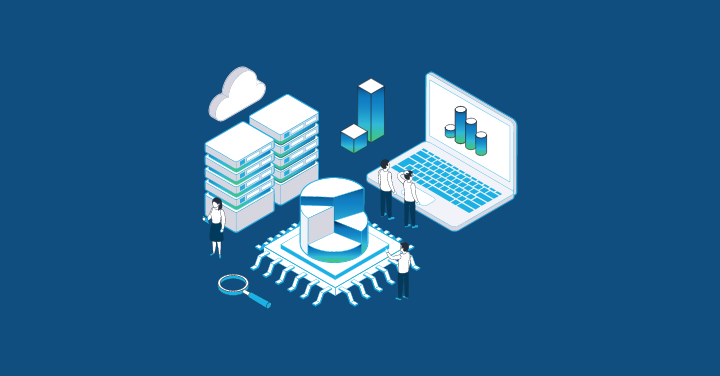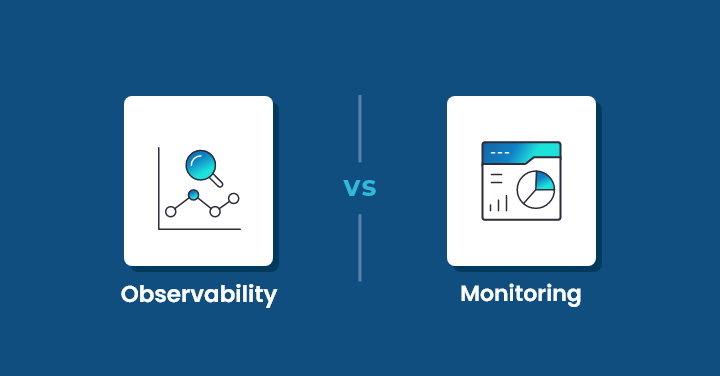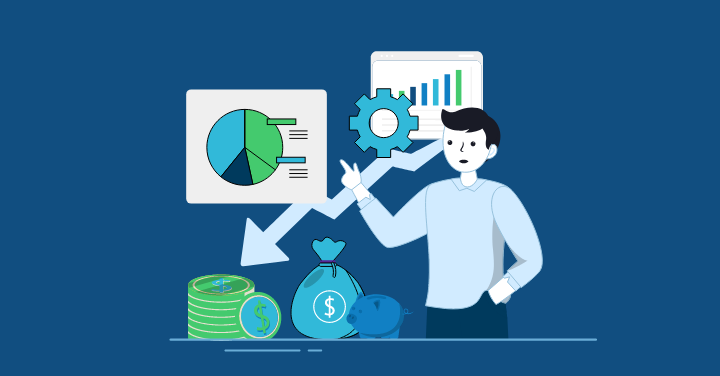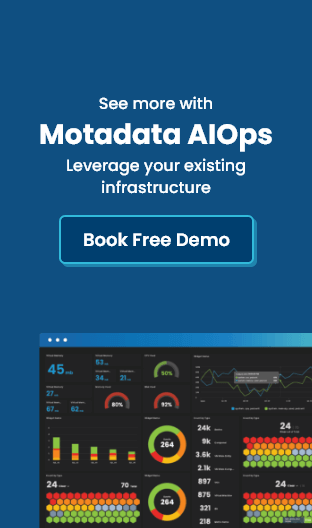Do you remember how easy it was to manage on-premises networks before the rise of cloud computing? There were limitations for less distributed networks and dynamic, hardware-centric approaches, etc., but everything seemed easy to handle.
But today, with the adoption of new technologies, troubleshooting even a minor network issue in an extensive distributed network is a big challenge. However, shifting from simpler on-premises networks to complex cloud networks was the need of the hour.
The increased complexity of cloud networks presents challenges, but the benefits of agility, scalability, cost-effectiveness, and innovation are undeniable.
Modern cloud networks are more dynamic than on-premises and offer microservices, containers, and multi-cloud deployments.
This transition from traditional infrastructure to a modern cloud environment has transformed network operations, making network troubleshooting more challenging than ever.
Today, managing dynamic infrastructure with traditional network monitoring tools is impossible.
These tools lack the depth to monitor ephemeral cloud resources. Even the lack of visibility into distributed systems makes it challenging to find the root cause of the problem in real time.
This may result in increased downtime and impact user experience.
Hence, most organizations using cloud computing services or complex distributed networks use network observability tools to tackle this issue.
Observability is not just a mere monitoring practice but a proactive approach that enables organizations to understand the internal state of their systems.
It encompasses three critical pillars- logs, metrics, and traces that help organizations get a holistic view of network operations and troubleshoot issues in real time.
With this proactive monitoring approach, organizations can gain deep insights and identify unusual patterns and network behavior.
In short, observability-driven troubleshooting is no longer optional but a necessity for navigating cloud network complexity.
This blog will explore how observability can reduce MTTR and the best practices to ensure peak performance.
Decoding Cloud Network Complexity: Why Traditional Methods Fail
Here are a few reasons why traditional monitoring tools fail to manage complex cloud networks:
The Shifting Sands of Infrastructure: Dynamic and Ephemeral
Unlike static, on-premises systems, the modern cloud environment is dynamic and complex. These environments use auto-scaling, serverless functions, and container technology to manage ephemeral resources based on demand.
Traditional monitoring tools, which are designed to track fixed infrastructure, find it challenging to keep up with these constant changes and provide accurate insights.
Further, monitoring network traffic patterns in real-time in a dynamic infrastructure is impossible with traditional monitoring tools as they lack deeper visibility.
Microservices Mayhem: Distributed Dependencies Everywhere
Today, organizations use highly distributed systems to communicate with larger audiences over the network.
Adopting microservices architecture has dramatically benefited many organizations, but managing it and troubleshooting issues are significant challenges.
Traditional monitoring platforms were initially designed to manage simple and centralized systems.
Managing intricate network dependencies, cascading failures, and hidden bottlenecks in microservices-based applications is no longer possible with traditional methods.
Borderless Boundaries: Hybrid and Multi-Cloud Chaos
There are several cloud providers, such as AWS, Azure, and Google Cloud, that organizations operate in combination with on-premise infrastructure to deliver better user experience.
However, these hybrid and multi-cloud deployments also come with several challenges. Inconsistent visibility across different cloud settings, complex data aggregation, ensuring compliance, etc., is difficult with old monitoring methods as they struggle with visibility gaps, making it hard to track potential performance issues.
Security in the Cloud: A Moving Target
The complex cloud network structure has made managing network security more challenging. Relying on traditional methods is insufficient to identify security vulnerabilities and prevent data breaches.
You need a better cloud security monitoring solution to stop DDoS attacks and prevent data exposure.
Ensuring robust cloud security mechanisms is essential to track known and unknown threats before they impact users and cloud performance.
Observability’s Three Pillars: Building a Holistic View for Network Troubleshooting
In this evolving digital world, traditional network monitoring practices and tools cannot deliver accurate insights into performance and enable better cloud management.
Organizations must adopt a robust network observability approach to understand and find real-time performance issues in distributed dependencies and multi-cloud environments. The observability approach works on three key pillars, including:
Metrics: The Vital Signs of Your Network
Network Metrics are numerical values or measurements that clearly show your system performance.
These vital network signs detect early indicators of network failure or bottlenecks. Some key cloud network metrics that play an essential role in monitoring and anomaly detection include latency, throughput, packet loss, error rates, and CPU/Memory Utilization.
Using these real-time metrics, organizations can identify patterns and analyze the health of their network, enabling faster troubleshooting for smoother operations.
Logs: The Detailed Story of Network Events
Network Logs are text records of incidents and events within a network at a specific time. One of the crucial components of observability practice that helps diagnose issues and track patterns within the network. One cannot track the information collected by logs, even by tricky APIs or databases.
With structured logging (e.g., JSON format), team members or network administrators can effectively search, filter, and analyze logs.
Unstructured logs, however, are time-consuming to analyze. To gain meaningful insights into network issues, you can maintain access logs, i.e., tracking all incoming and outgoing network requests or error logs that capture network failures. You can even preserve application logs or security logs to conduct log analysis smoothly.
Traces: Following the Request Path Through Distributed Services
In complex, distributed systems, traces help map the journey of each request, which helps figure out how each service is connected and making transactions.
With the help of distributed tracing, network administrators can identify issues in the system transactions in real time.
Further, reveals latency issues or the real cause of performance bottlenecks across microservices and distributed components using these insights.
Here is an example of request tracing in which a user initiates a request on a web application. A user request will be traced as it hits the API Gateway, which will forward the request to Service A.
Now, Service A will call Service B to inform them about the request made by the user. In return, Service B will fetch information from the database and quickly respond to the user’s request.
In response delay, distributed tracing can identify if the issue occurred in Service A, Service B, or the Database, enabling faster performance optimization. One can also perform trace analysis in complex microservices setups.
The Power of Correlation: Weaving the Pillars Together
Each pillar provides meaningful insight that helps analyze networks’ overall performance and behavior.
Rather than using a single piece of information, it is best to combine their fundamental strengths to get both back and front-end perspectives of your system.
The true potential of each pillar can be observed by correlating observability data. Data correlation can help accelerate the root cause analysis process and generate contextual insights.
For example, if application latency suddenly increases, you can view the performance metrics to track this change.
Further, analyzing log files will help find the root cause of the problem. You can even find other issues occurring due to the root cause of the problem and trace other requests.
This enables IT teams to prevent future issues by resolving the root problem. This connected method can provide a holistic network view and allow for immediate discovery of topics.
Organizations can maintain network stability and optimize performance by adopting an integrated monitoring approach.
Observability in Action: Real-World Cloud Network Troubleshooting Scenarios
Scenario 1: Hunting Down Intermittent Connectivity Drops – Metrics and Logs Lead the Way
An e-commerce business faced intermittent connectivity failures, causing failed checkouts and higher bounce rates. To identify the problem, IT teams leveraged network metrics and system logs.
Further, IT teams detected packet loss spikes using Prometheus but lacked the root cause.
Correlating network metrics with system logs, they found a misconfigured load balancer rejecting traffic and a firewall blocking API requests.
Scenario 2: Detecting and Responding to a Potential Security Breach – Log Analysis for Rapid Response
An application faced suspicious activities such as unusual login attempts and security breaches. To identify the loophole and uncover these security threats, it is best to check security logs and access logs as they play a crucial role in highlighting deviations.
By leveraging log management and Security Information and Event Management (SIEM) tools, organizations can continuously monitor and analyze log data to detect anomalies.
These tools provide automated real-time alerting, enabling security teams to respond swiftly to potential incidents and contain threats before they escalate.
Further, implementing a robust log analysis and alerting system ensures that security teams have the necessary visibility and insights to take immediate action during a breach, strengthening the overall cybersecurity posture.
Step-by-Step Walkthrough: Troubleshooting Slow Application Performance
Let’s take the first scenario and understand the steps that one must follow to diagnose and resolve the issue efficiently.
Step 1: As the user reports slow page load time, check your monitoring tools. Look for symptoms, such as an increased latency in API response times.
Step 2: Use tools like Jaeger or Zipkin to trace your request flow across microservices. To find the problem, filter your traces by high-latency requests. Check different services, API calls, and database queries to figure out which one is causing delays.
Step 3: Use tools like Prometheus to measure CPU, memory, and network utilization. Even look for spikes in resource usage to get a better understanding of the status.
Step 4: Go for deeper insights by reviewing your application log files. It will help you identify slow database queries. Also, go through server logs to trace network issues.
Step 5: After concluding the collected insights, optimize your slow database queries and adjust API rate limits.
Step 6: Re-run distributed tracing to confirm the issue is completely fixed.
Implementing Observability: Best Practices for Cloud Network Success
With the right tools and techniques, organizations can make the most of network observability, but it is essential to keep the following best practices in mind:
Instrumentation is Key: Collecting the Right Data
The first step of observability is data collection. Ensure monitoring capabilities are embedded within applications, infrastructure, and network components to generate insightful information from critical telemetry data, such as metrics, logs, and traces.
Further, find network management solutions that integrate well with your current setup that may help in performance optimization and diagnosis.
You can use several instrumentation techniques like software agents, code, or APIs to gather data from different sources.
Remember, observability is not limited to mere data collection, and it is also essential to ensure you collect the correct network data.
Data Aggregation and Smart Analysis: Turning Data into Insights
For effective observability, it is essential to centralize all information collected from multiple data. Data aggregation is another key practice that consolidates logs, metrics, and traces from different environments to make anomaly detection easier.
These observability platforms run data analysis and convert raw data into actionable insights. You can use dashboards and data visualization tools to generate visual reports of collected insights.
Proactive Alerting and Automation: Staying Ahead of Problems
Observability platforms aim to resolve real-time issues, requiring proactive monitoring and alert setup. With alerting systems in place, IT teams can identify issues in real time and avoid problems from being missed.
You can configure alert systems to trigger notifications based on predefined thresholds, anomalies, or system failures.
You can implement scripts or playbooks on network devices for automated troubleshooting and faster incident response. Also, using automation to add resources or restart services can ease network operations.
Collaboration and Shared Visibility: Breaking Down Silos
Collaboration and communication over observability data across cross-functional teams, including development, operations, and security, is essential.
Teams can find and fix issues faster with access to shared dashboards and unified monitoring platforms.
Further, shared visibility and team communication can help teams get each team member’s viewpoint with different solutions, enabling faster troubleshooting.
Conclusion: Embrace Observability – The Future of Cloud Network Mastery
Our tech world is constantly evolving, and new technologies are being introduced to make the cloud environment easy and accessible for all.
Thus increasing the complexity of finding issues across distributed networks and preventing threats in real-time.
Embracing observability is no longer an option – overcoming cloud network complexity challenges has become necessary.
With the power of observability, organizations can reduce Mean Time to Resolution (MTTR), enhance overall network performance, proactively identify issues, strengthen their security areas, and optimize costs.
Further, these real-time monitoring tools offer deeper visibility, AI-powered analysis, predictive maintenance, and automated root cause analysis to manage cloud infrastructure.
It’s still not too late to embrace observability in your cloud strategy. Step into the era of observability and get a hold of your cloud network complexities.
By adopting observability-driven solutions, you can unlock new efficiency, intelligence, and resilience levels in network management.
Start your journey by incorporating the Motadata observability tool for better cloud infrastructure.







